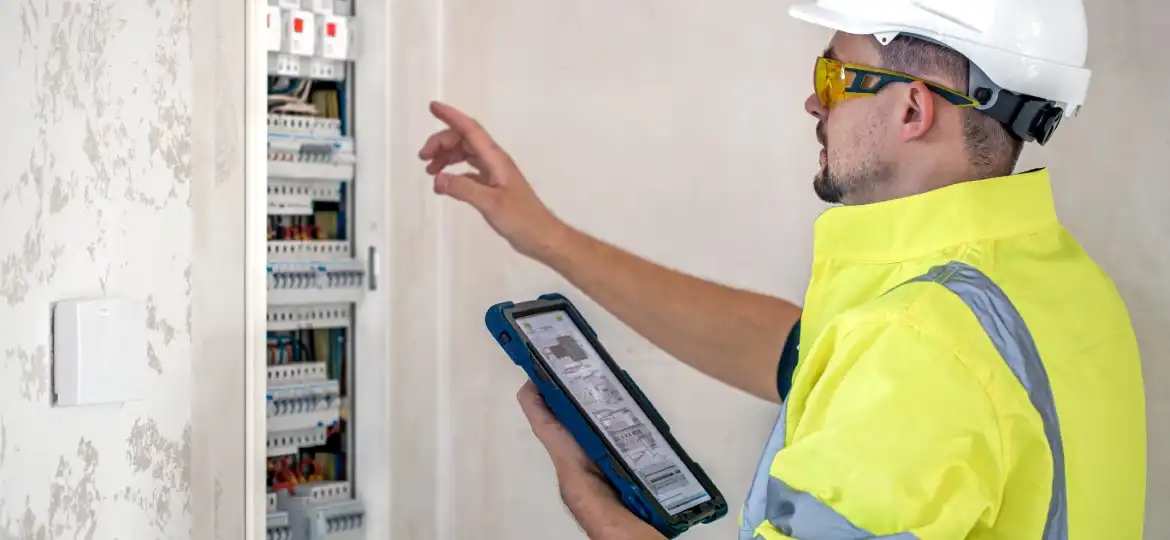We Guarantee You the Safe Choice!

Building Rank Guarantees You the Safe Choice!
Learn how an engineer conducts an electrical survey of a building and the steps he takes to complete the task. From the time the client submits a service request to the time the engineer visits the work site, inspects the electrical system, and issues a detailed work report.

Electrical engineers at Building Rank conduct electrical surveys and a comprehensive assessment of all electrical systems within the building, including electrical cables and their suitability for carrying current. The building's main panels and all sub-panels and electrical outlets will be thoroughly inspected. This work is essential to ensure the safety and continuity of the system and prevent unwanted electrical accidents.
When a client requests services from a company, an electrical engineer goes to the work site and uses a full range of modern equipment to inspect all electrical points within the building or home. The importance of these devices lies in their quality. The devices used in electrical surveys are non-destructive devices (such as thermal imaging devices) that test and identify electrical faults without causing damage to the building. After examining all points inside the house, the device provides engineers with a set of results and the journey of engineering analysis of electrical systems and their quality begins.
Engineers review the electrical plans and compare them to reality to ensure that reality matches the existing plans. This allows us to identify any deviations from the original design, allowing customers to ensure that their electrical systems meet international electrical safety standards. Any defects or problems will be addressed directly.
After testing the building's electricity on site and receiving the results from the equipment, the engineer collects all the necessary data and readings. This information forms the basis for the engineering evaluation of the electrical systems. This data forms the basis for subsequent analysis and the necessary measures to ensure the electrical safety of the building and the quality of the power system.
Engineers identify errors and provide comprehensive and appropriate solutions for each potential problem. The solutions are also explained in detail to help you make the right decisions. Testing the electricity in this way ensures that the company's clients are aware of all electrical faults in their buildings. This is a precise and error-free process, as electrical safety is a very important topic and the building classification ensures that our clients receive a comprehensive report.
After the engineers return to the company's office and analyze the data, they start working on internal programs, compiling information and working on electrical system reports. Through the process of comprehensive analysis and organizing engineering work, this program will help you start the process of creating a comprehensive report on the status of your electrical system and all electrical faults that have been inspected in the field. The report also includes technical analysis, results and recommendations for necessary improvements and repairs. Clients can view a report describing the electrical system point by point, in addition to pictures of existing faults and problems and how to solve them. Problem.
Our work in the field of electrical systems standardization aims to ensure that our clients are aware of the current electrical status of their buildings and the results of electrical surveys, with all the information included in our reports.